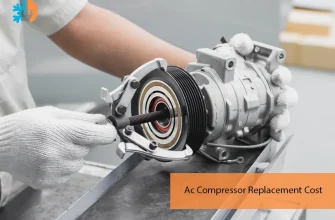In the ever-evolving realm of automotive technology, steering angle sensors (SAS) play a pivotal role in enhancing vehicle safety, performance, and functionality․ This article delves into the intricacies of steering angle sensors, exploring their function, significance in modern vehicles, and the impact they have on driving dynamics․
What is a Steering Angle Sensor?
A steering angle sensor is a crucial component in a vehicle’s steering system, tasked with measuring the angle of the steering wheel in relation to the vehicle’s chassis․ This data is vital for various electronic systems within the vehicle, particularly those related to stability control and advanced driver-assistance systems (ADAS)․
How Does a Steering Angle Sensor Work?
The operation of a steering angle sensor involves detecting the rotational position of the steering wheel․ This is typically achieved through a combination of mechanical linkages and electronic sensors․ The most common types of steering angle sensors include:
- Potentiometer Sensors: These sensors use a variable resistor to measure the angle based on the wheel’s movement․
- Hall Effect Sensors: Utilizing magnetic fields, these sensors determine the steering angle with high precision․
- Optical Sensors: These sensors use light to detect the position of the steering wheel, providing accurate readings without physical contact․
Once the angle is detected, the sensor relays this information to the vehicle’s electronic control unit (ECU), which processes the data and adjusts various systems accordingly․
The Importance of Steering Angle Sensors
The importance of steering angle sensors cannot be overstated․ Here are several key functions that highlight their critical role in modern vehicles:
1․ Enhancing Vehicle Stability
Steering angle sensors are integral to stability control systems, such as Electronic Stability Control (ESC)․ By continuously monitoring the steering angle, these systems can detect when a vehicle is losing traction and apply brakes to individual wheels, helping to maintain control during slippery or sudden maneuvers․
2․ Assisting in Advanced Driver-Assistance Systems (ADAS)
Many ADAS features, such as lane-keeping assist and adaptive cruise control, rely on accurate steering angle data․ By understanding the driver’s intended path, these systems can make real-time adjustments, enhancing safety and comfort․
3․ Improving Handling Dynamics
Steering angle sensors contribute to better handling characteristics by providing feedback to the vehicle’s suspension and steering systems․ This ensures that the vehicle responds predictably to driver inputs, allowing for a more engaging driving experience․
4․ Enabling Autonomous Driving Technologies
As the automotive industry moves towards greater automation, steering angle sensors are essential for the development of autonomous vehicles․ They provide critical data that allows these vehicles to navigate safely and efficiently, mimicking human driver behavior․









Fantastic article! It really highlights the significance of steering angle sensors in modern vehicles. A must-read for car enthusiasts!
This article provides a comprehensive overview of steering angle sensors. I learned so much about their importance in vehicle safety!
The insights into how steering angle sensors work were fascinating. I never realized how complex these systems are. Well done!
I appreciate how detailed this piece is! The explanation of different types of sensors was particularly enlightening. Great read!
Great job breaking down the functionality of steering angle sensors! This knowledge is essential for anyone interested in vehicle dynamics.
I found this article incredibly informative. It’s amazing to see how technology has advanced in the automotive industry, especially with SAS.
This article really opened my eyes to the role of SAS in vehicle performance and safety. Highly recommend it to fellow drivers!